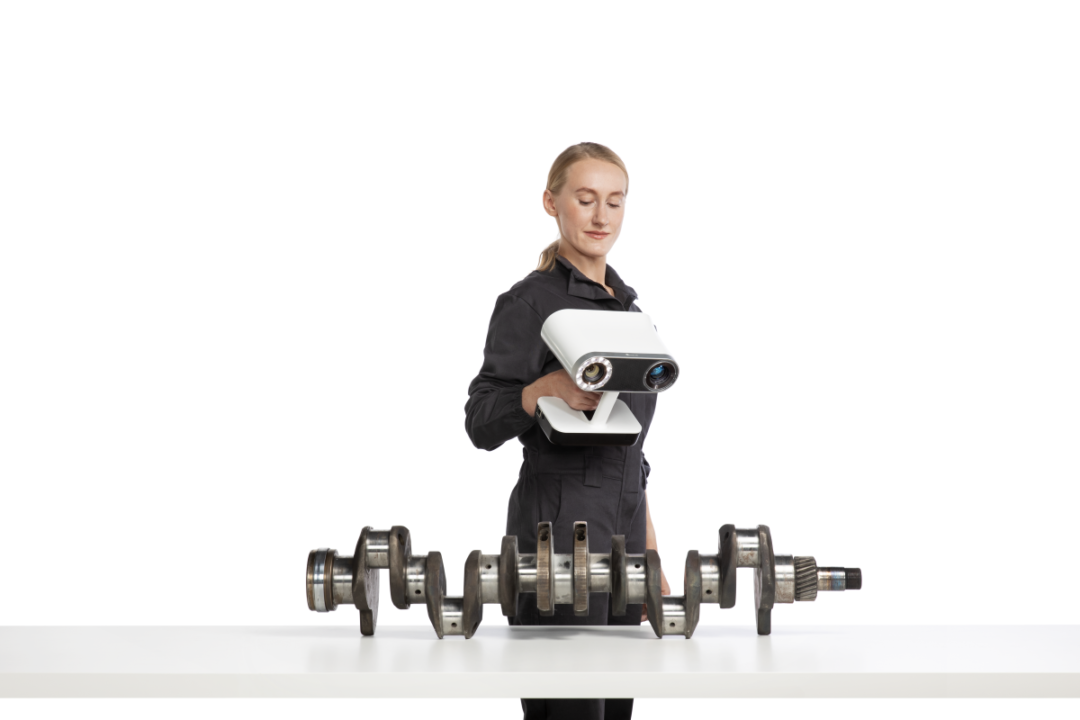
The pandemic forced stakeholders to recognize the importance of adapting and incorporating innovative, particularly in relation to cost savings and efficiency.
One of the technologies used to mitigate the challenges was 3D scanners. These have unique capabilities that make them an efficient asset for the supply chain industry, achieving valuable results such as reducing error rates, optimizing productivity, and improving accuracy.
Improving quality inspection
The American Society for Quality estimates that many organizations will have true quality-related costs as high as 15-20% of sales revenue, some going as high as 40% of total operations. Effective quality improvement tools can reduce the cost substantially and improve profits for the organization.
3D scanners, for example, are used to improve quality inspection as it provides a faster and more accurate method of ensuring products are meeting standards throughout every stage of the manufacturing process. Different industries use 3D scanners to help improve the supply chain process, including medical devices, furniture, jobbing foundry, packaging, logistics, automotives and more. However, each industry uses the technology to ultimately optimize workflow.
Basic tools traditionally used within quality inspection teams such as calipers and gauges are time-consuming and prone to human error. Another commonly used tool for inspection, CMM machines, are also extremely time-consuming, difficult to learn how to use, and not portable. 3D scanners, however, accelerate production lines by providing higher levels of accuracy and speed. This transforms the process, as 3D hand-held scanners require very little training and are fast to use, which reduces labor hours. They also provide a very high level of accuracy. Accurately identifying imperfections via 3D scanning early on also saves time and costs further along the processing supply chain.
Streamlining the manufacturing processes
Another way industries can use 3D scanning is to streamline the manufacturing process. Most manufactured goods follow a common process through their lifecycle to production. Design, manufacture, and inspection are generalized ways to consider the process, and each one is key to producing high-quality parts.
For example, 3D scanning can improve results with minimum iterations. Even before a product goes into the supply chain, 3D scanning streamlines the prototyping workflow as initial designs can be scanned and modified in CAD software simply and quickly. It also enables designers to easily compare accurate measurement data between multiple design iterations, which can significantly reduce the number of prototype cycles. For instance, the heat process in 3D printing causes the final parts to distort and sometimes deviate from the original CAD model. Using 3D scanning for inspecting 3D printed parts can capture the total shape and analyze the 3D printed casting patterns and cast parts to ensure the model is within specifications, at all stages in the design, prove-out, and manufacturing process.
Efficiency is key to maintaining profit and reducing waste in both human and manufacturing cycles. The benefits of using a total solution for high quality 3D scanning and scan-native industrial inspection software is the reduction in iteration and guesswork. This not only saves time and money but can ensure a faster time to market. In fact, companies that used 3D scanning saw a 27% reduction in cost with a 10% increase in total accuracy and a 14% increase in end-part accuracy.
Logistics
Moreover, accurate data on warehouse stock is critical to avoid losses due to mismanaged inventory and to calculate the required cargo space. Automated solutions in the form of 3D scanning eliminate human error while increasing productivity and efficiency.
For example, augmented reality uses 3D scanning to digitally simulate models over the physical layout of current surroundings. This is driving increased productivity and performance in logistics to help pickers locate, scan, and deliver the correct product to the loading dock.
Another way to use 3D scanning is to support, monitor and track shipments to prevent loss and damage, as scanning can determine box-dimension requirements prior to products being packed and to record all of the contents, in order to reduce costs and claims for damaged or lost goods. As an example, a food-packaging manufacturer can use 3D scanning technology to create packaging that fits their products perfectly. When scanning food that needs to be packed, 3D models show all the details and any imperfections, making it easier to intervene in the data processing state and delete these parts to create the perfect package.
The 3D scanning revolution
During the pandemic, companies had to rely on other technologies to navigate the new challenges COVID-19 brought to the supply chain industry. 3D scanning has been an innovation which has transformed over recent years and provided detailed, portable scanning to all industries. As more industries start to adopt 3D scan technology to support supply chain issues, and the technology continues to advance, stakeholders will start to notice the incomparable benefits and improvements to current processes across all areas of the global supply chain.
Overall, 3D scanning technology is able to reduce error rates, optimize productivity, and improve accuracy, ultimately driving cost savings across the entire supply chain. With 3D scanning revolutionizing different industries, it’s about choosing the right scanner to get the desired results, and this is just the beginning.
Artyom Yukhin is CEO of Artec 3D.







